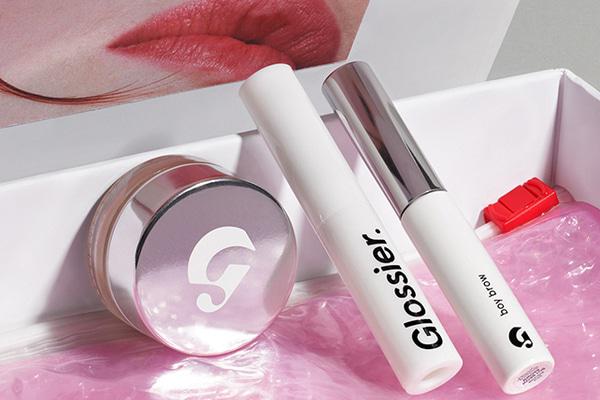The beauty company Glossier just closed on a whopping $52 million in fresh funding

Glossier, the nearly four-year-old, direct-to-consumer beauty company, has landed $52 million in Series C funding in what it describes as a heavily oversubscribed round. The financing was led by earlier investors IVP and Index Ventures.
The New York-based company — which evolved out of the popular blog Into the Gloss by founder and CEO Emily Weiss — began selling its own make-up at the outset but has more recently added body and fragrance products, too, bringing its total number of offerings to 22. One of the company’s most popular products is a mascara-like eyebrow filler called Boy Brow. Among its newest: a solid version of its fragrance, You.
The company says it launches something new every six weeks, on average, and that it spends a lot of time working on its formulas. (A spokesperson tells us Glossier spent 15 months developing a new $24 exfoliant.) But Glossier is just as well-known for brand-building and its ability to grow consumer awareness in a highly crowded global beauty industry that’s expected to grow from $433 billion today to $750 billion by 2024, according to one estimate.
The 150-person company doesn’t disclosed its revenue numbers, but it tells us Glossier saw three times as much revenue last year as in 2016. It also opened offices in London and Montreal, after quietly acquiring a small Canadian digital strategy studio called Dynamo. (One of Dynamo’s cofounders, Bryan Mahoney, is now Glossier’s CTO.)
And Glossier opened up a sixth-floor showroom in the same SoHo building where its offices are located. Even without a street-level window, it generates more sales revenue per square foot than the average Apple store, Weiss told New York Magazine in a glowing cover story about Glossier that ran last month. (The story also referred to Weiss as the “millennials’ Estée Lauder.”)
Much of the company’s magic appears to be rooted in simplicity. Instead of offering 15 shades of lipstick, for example, it tells its customers it has developed the most universally flattering red lipstick in order to make it simpler for them to choose a shade.
The company also prides itself on the numerous ways it keeps communication channels to its consumers wide open. Beyond its popular blog, Glossier uses Instagram as well as any brand, and in late 2016, it began testing a representative program to start paying the most powerful of its “Glossier Girls” — formerly unpaid brand evangelists — which it says has grown tremendously.
The reps receive advance notice of new products; they’re also often asked to participate in feedback sessions, they have direct access to Glossier’s team, and they are invited to and host their own community events, as well as talk about Glossier’s products on social media. (In addition to access to Glossier goodies, they each have their own landing pages on Glossier.com where followers can learn more about them.)
Weiss spoke at an event hosted by this editor last year, where she noted that in this day and age, not only is the customer always right, but thanks to social media — whether it’s a product review on Amazon or an Instagram post — that customer “has a microphone and she’s reaching 50, 500, 5,000 or 500,000 of her nearest and dearest friends and is able to talk about her preferences.”
It’s why Glossier is so laser focused on “transparency” and “voice,” Weiss had explained.
“We like to think that whenever we talk to [our customer] through captions on Instagram or through email or through copy on the site, that we’re writing text messages to a friend.” For Glossier, “staying true to that voice has created a lot of loyalty and trust with our customers.”
It apparently has Glossier’s investors feeling very loyal to the company, too. With its newest round, Glossier has now raised $86 million from them altogether.